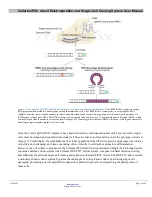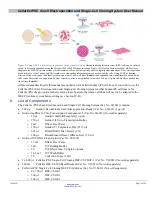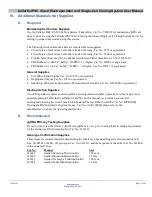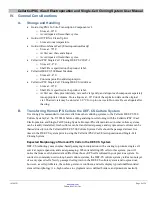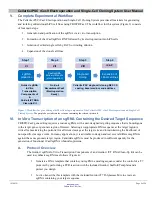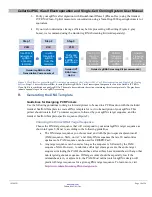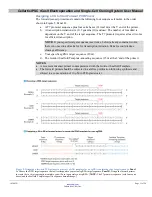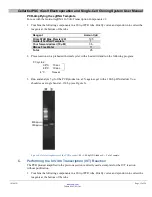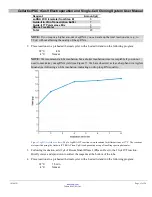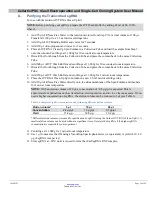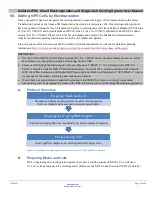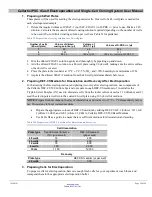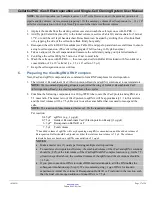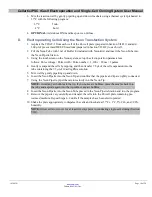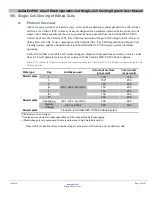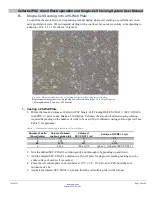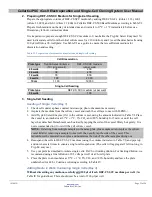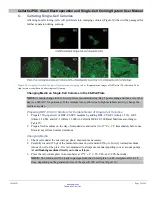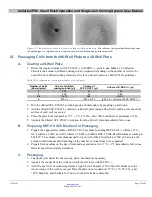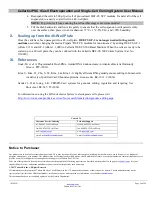
Cellartis iPSC rCas9 Electroporation and Single-Cell Cloning System User Manual
(030619)
takarabio.com
Takara Bio USA, Inc.
Page 19 of 24
VIII. Single-Cell Cloning of Edited Cells
A.
Protocol Overview
After a recovery period of at least five days, cells can be seeded singly and expanded into edited clonal
cell lines. As Cellartis iPSC culture systems are designed for a seamless transition between the various
stages of an editing experiment, there is no special transition needed from the Cellartis DEF-CS 500
Culture System to the Cellartis iPSC rCas9 Electroporation and Single-Cell Cloning System. However,
during Protocols VIII–X, use components of the Cellartis iPSC rCas9 Electroporation and Single-Cell
Cloning System, and then transition back to the Cellartis DEF-CS 500 Culture System for further
upscaling.
Table IV describes a schedule of all media changes (volume and composition) necessary to create clonal
lines in 24-well plates that are ready for culture with the Cellartis DEF-CS 500 Culture System.
Table IV. Workflow for single-cell cloning and expansion using the Cellartis iPSC rCas9 Electroporation and Single-Cell
Cloning System.
Plate type
Day
Additives used
Volume of medium
(µl per well)
Total volume
(µl per well)
96-well plate
1
GF-1, GF-2, and GF-3
100
100
3
100*
200
5
150
200
(6)
150
200
7
150
200
(8)
150
200
9**
150
200
48-well plate
Passaging
GF-1, GF-2, and GF-3
500
500
Medium
Change
GF-1 and GF-2
500
500
24-well plate
Transition to Cellartis DEF-CS 500 Culture System
*Add medium; do not replace.
**Use the same volumes for subsequent days until the cells are ready for passaging.
( ) Media change is only necessary if media is yellow due to high metabolic activity.
Once stable clonal lines have been developed, proceed to verification of your desired edits.

